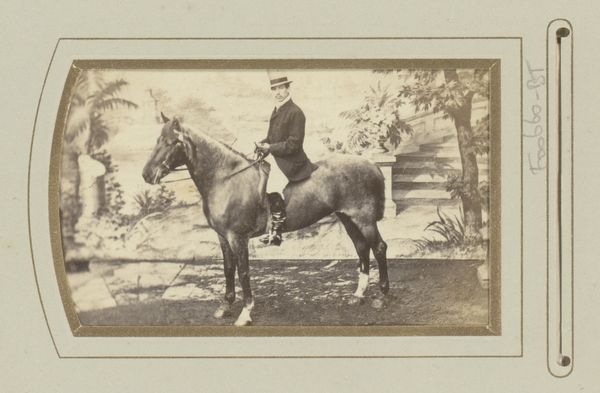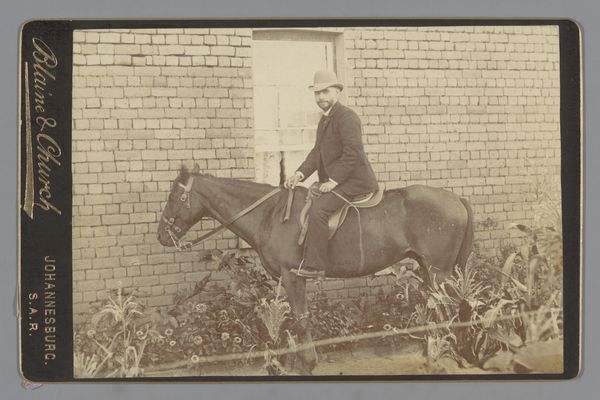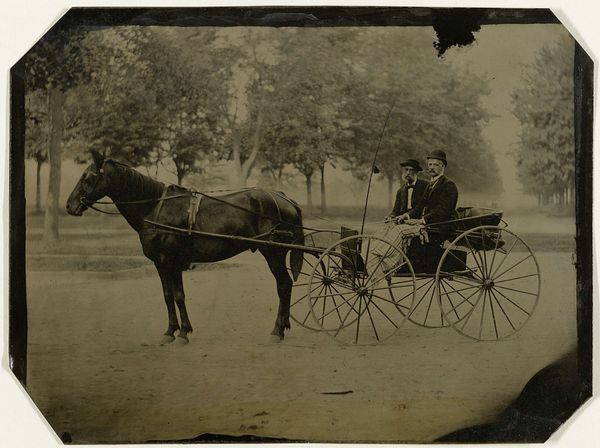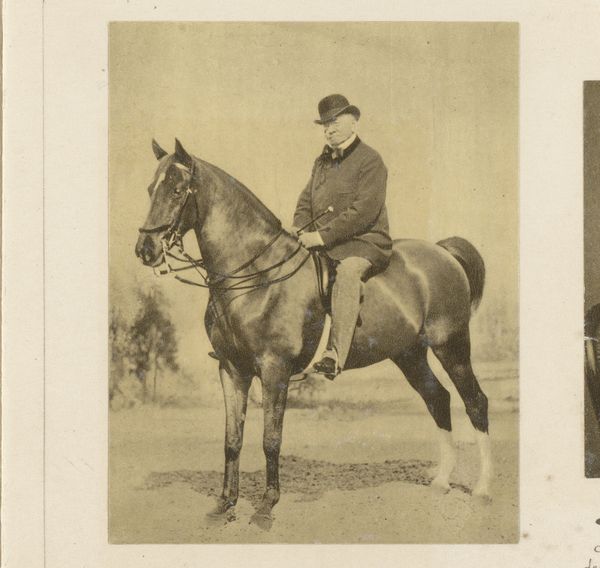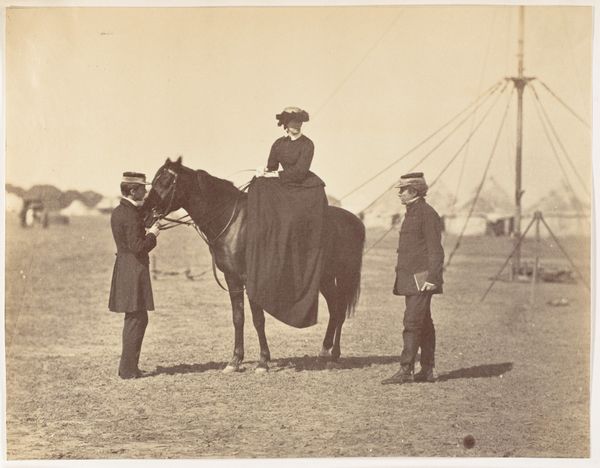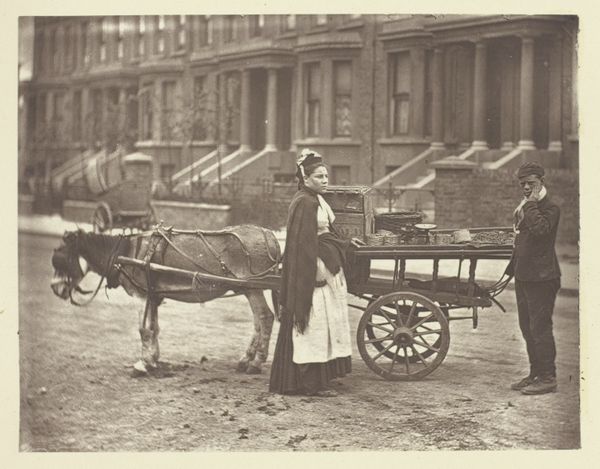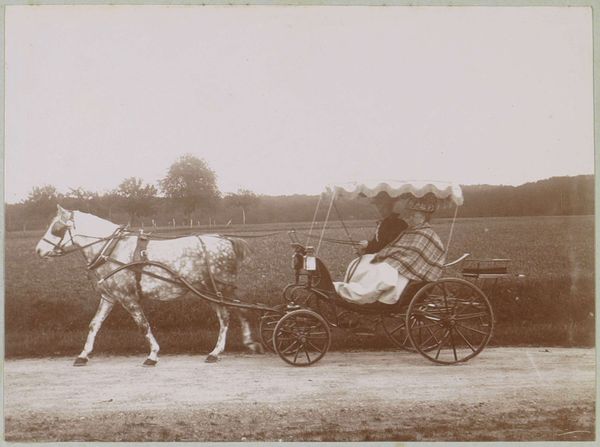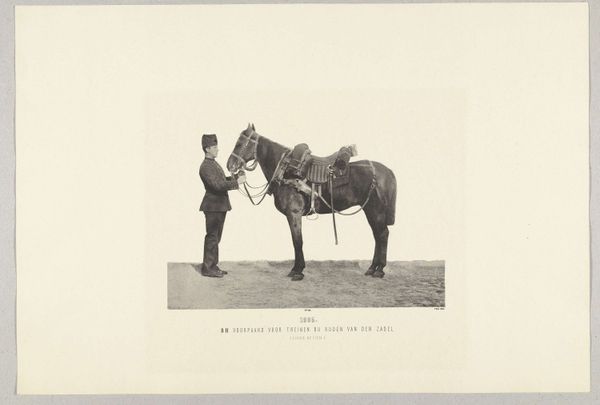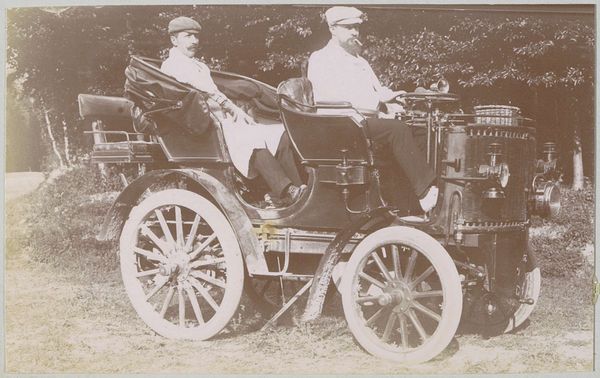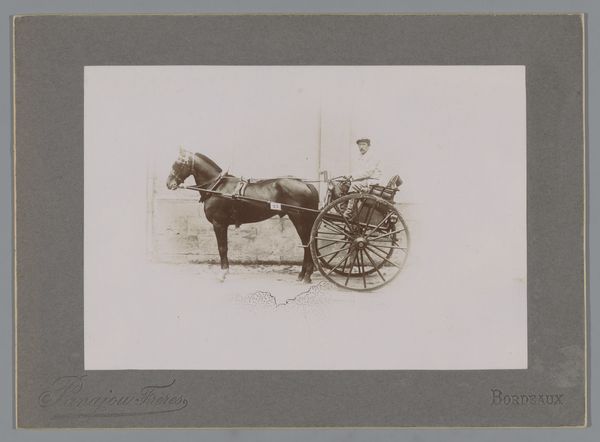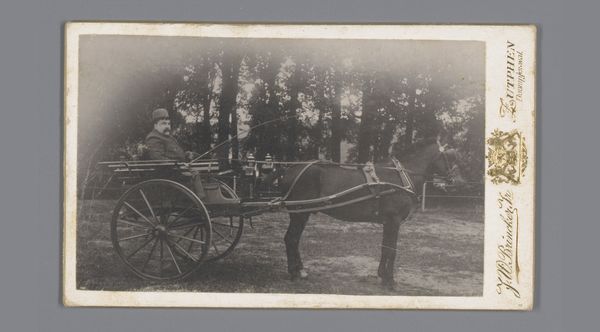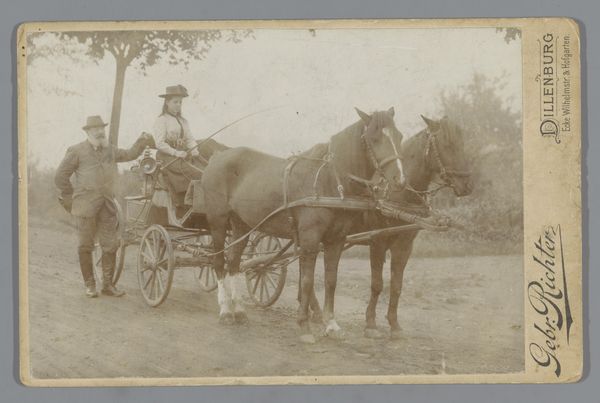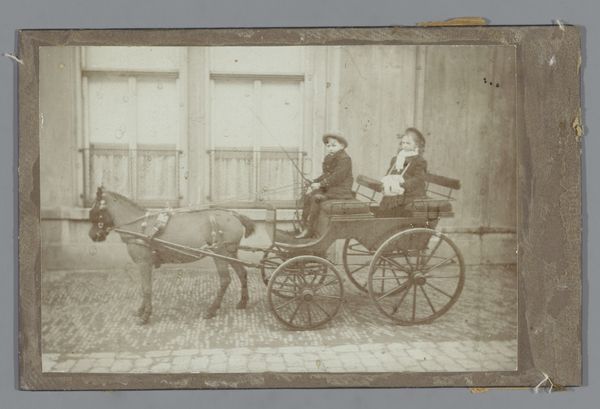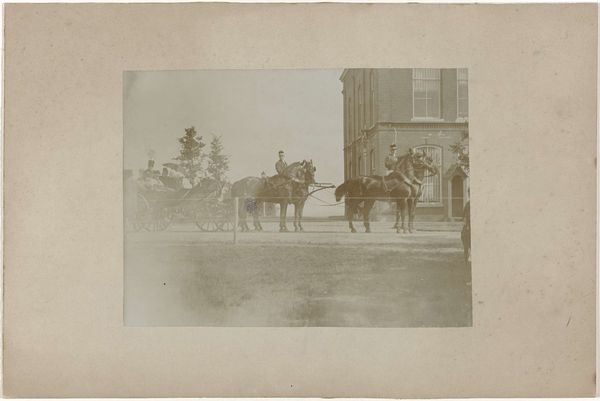
photography
#
portrait
#
landscape
#
photography
#
horse
#
19th century
#
men
#
realism
Dimensions: 11.3 x 14.7 cm. (4 7/16 x 5 13/16 in.)
Copyright: Public Domain
Editor: So, here we have Alfred Capel Cure's photograph, "Reverend L. C. Cure and His Pony," taken in 1859. It's a very stately portrait, but almost feels staged and a little… melancholic, perhaps? What strikes you most about it? Curator: The most striking element is its deliberate use of symbolism. A pony, unlike a war horse, speaks of domesticity and a gentle nature, fitting perhaps for a clergyman. But consider the pony itself, tethered, controlled. What societal constraints do you think it suggests, both for the man and perhaps, more subtly, the animal? Editor: That's interesting, I hadn't thought about the implied constraints. It almost makes me wonder if there's a commentary on the roles they both play, literally and figuratively. Curator: Exactly. Think about the formal attire, too. The top hats. They communicate a very specific status, and expectations. Could we read the photograph as a portrait of a man defined by his social position and duties, subtly hinted through these iconic garments and animal companion? How might that impact its reception among different social classes at the time? Editor: I suppose that, depending on the viewer, it could evoke either aspiration or resentment. Curator: Precisely. And remember, the photograph itself was a relatively new medium then. What does it say about representation, and who gets represented, at this historical juncture? Editor: It feels like even a seemingly simple portrait contains so much more when you start digging into the symbolic weight of each element. Thank you for that insight. Curator: Indeed. Every image, every pose, holds echoes of cultural memory. Looking closely allows us to hear those echoes more clearly.
Comments
No comments
Be the first to comment and join the conversation on the ultimate creative platform.
